Partners in the City’s Success
Whether through innovation, a career transition or caring for others, it’s the people in commercial real estate who truly make a difference
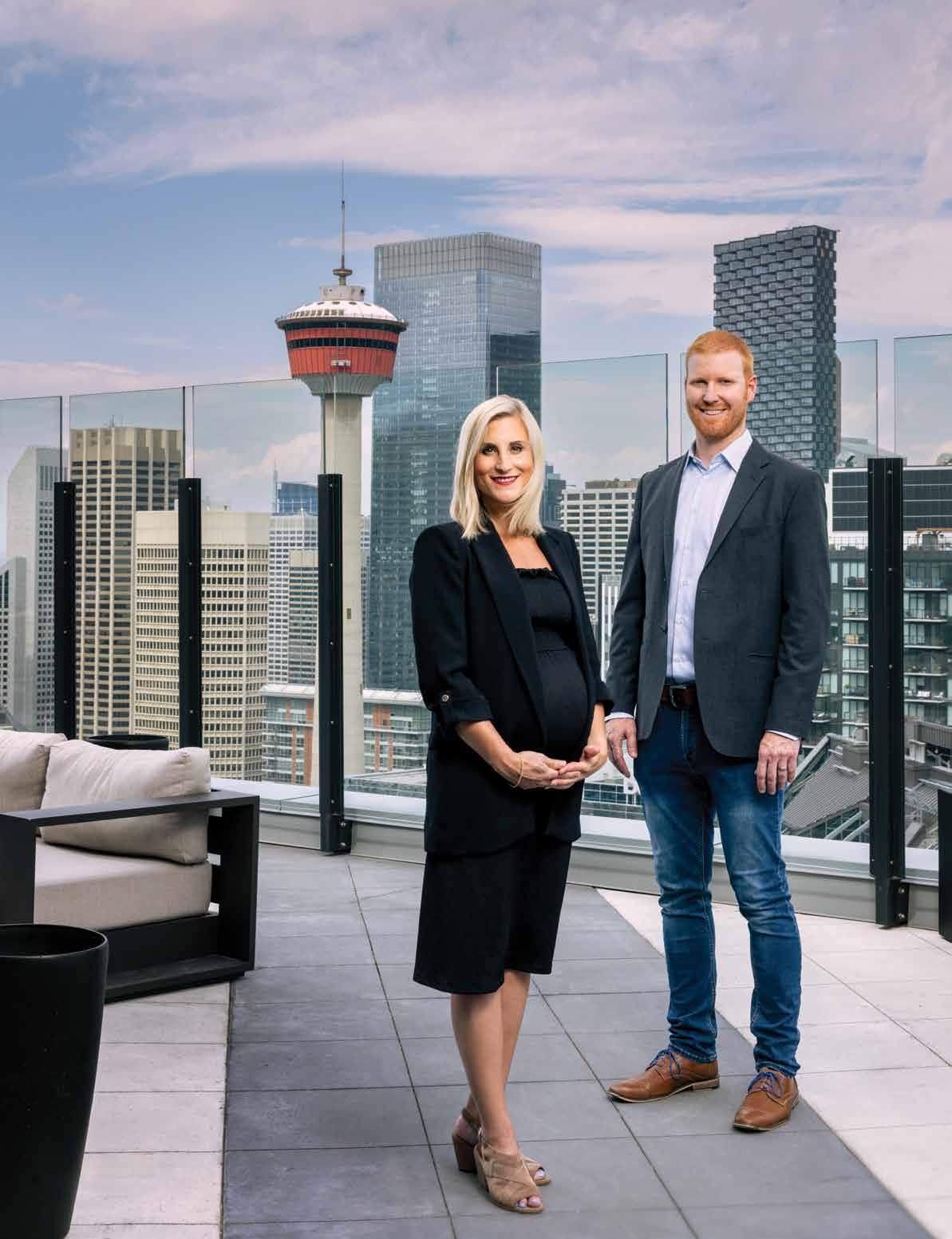

Whether through innovation, a career transition or caring for others, it’s the people in commercial real estate who truly make a difference

office properties in premier locations across the globe. All with the same commitment to sustainability, education, and connectivity.

500+
9 million square feet of best-in-class assets in downtown Calgary, where work and play don’t just co-exist, they thrive.

events annually around the globe supporting innovation in music, dance, theatre, film, and visual art through free art exhibitions and cultural experiences within our properties.

BOMA Calgary provides educational sessions on dealing with downtown crime.
BOMA members talk about using new technologies and the impact AI could have on the future of commercial real estate.
After years in the construction industry, Michael Kennedy transitioned into commercial real estate and hasn’t looked back.
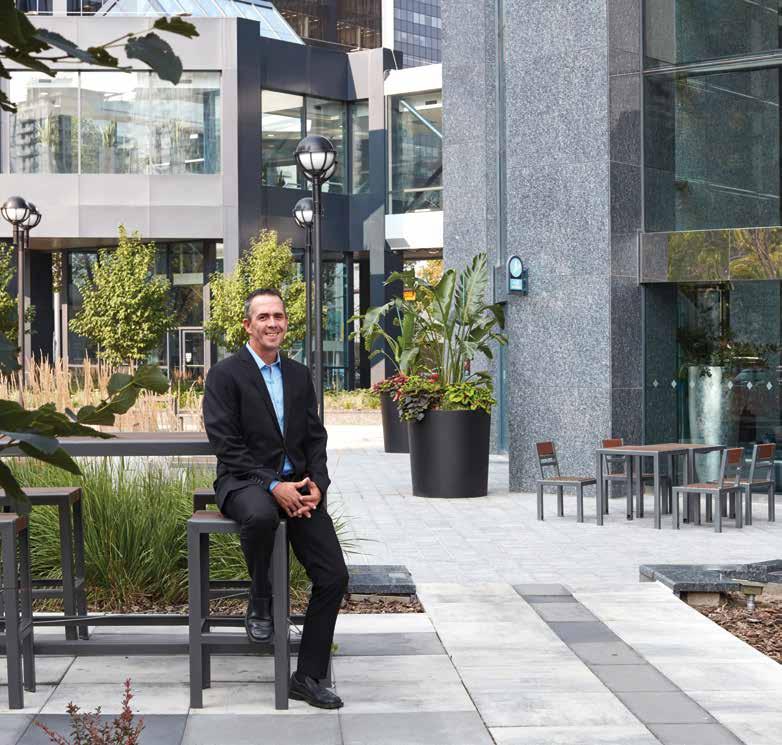
18
As new technologies like ChatGPT emerge, the commercial real estate sector examines how AI will impact building managers.
20
On the Cover: Whether attracting new talent to the industry like Stefanie Shanahan or Graham Halsall being on the cutting edge of sustainability, there’s no denying that it’s the people in commercial real estate who make a difference.

With a recent surge and continued low vacancy rates, the innovation happening inside the walls of industrial buildings is more than meets the eye.
How the Taza development aims to meld together Tsuut’ina culture and commercial real estate.
58

HBO’s The Last of Us transformed several Calgary buildings into apocalyptic settings, adding to an already bustling filming scene in the city.
The Last Word Art Skow: The three keys to success in commercial real estate all revolve around people and apply equally to all positions.

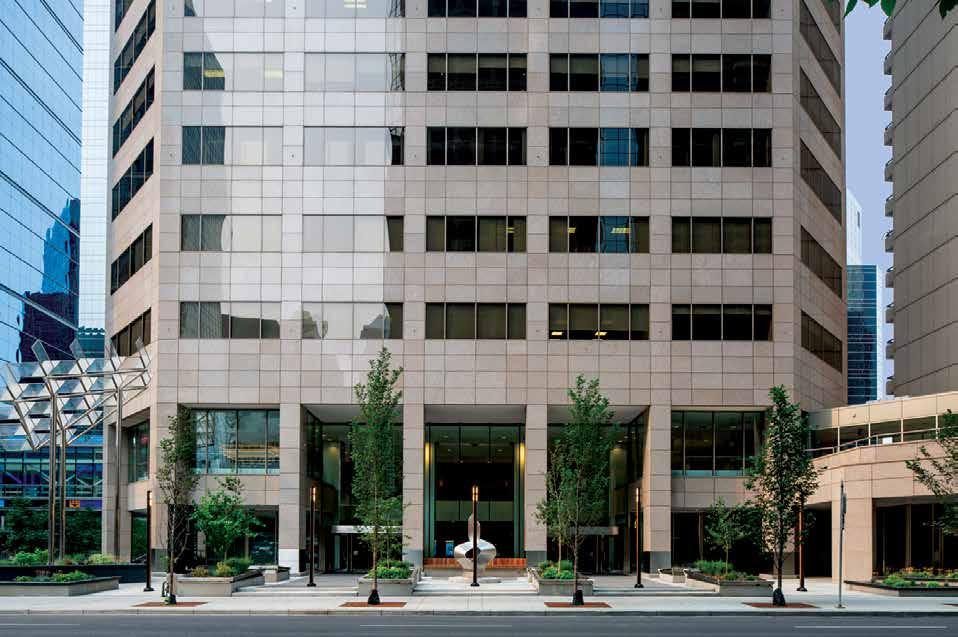
BOMA Calgary, Suite 225, 550 11th Ave. SW, Calgary, Alberta, Canada T2R 1M7
Ph 403-237-0559; email info@boma.ca
Board Chair, BOMA Calgary Rob Blackwell, Aspen Properties
Executive Director Lloyd Suchet
Marketing & Events Manager Aydan Aslan
Government & Member Relations Manager Jay Islam
The information presented in the print and online versions of the 2023-2024 BOMA Calgary Building Guide was supplied to BOMA Calgary by various building ownership and management industry sources, most of whom were the building owners’ representatives. While BOMA Calgary believes this information to be accurate, it does not warrant it to be so. Updates, additions or changes to this information should be sent to info@boma.ca.
Additional copies of the Building Guide are available from BOMA Calgary. View the Building Guide online at www.boma.ca.
© 2023 by BOMA Calgary and RedPoint Media Group Inc.
Printed in Canada by TC Transcontinental.
RedPoint Media & Marketing Solutions,
cSPACE Marda Loop 1721 29 Avenue S.W., Suite 375 Calgary, Alberta, Canada T2T 6T7
Ph 403-240-9055; email info@redpointmedia.ca
Advertising Inquiries advertising@redpointmedia.ca
RedPoint Media & Marketing Solutions:
President Käthe Lemon
Manager of Content Studio Meredith Bailey
Managing Editor Derek Clouthier
Art Director David Willicome
Staff Photographer Jared Sych
Production Manager Mike Matovich
Contributing Writers Mario Toneguzzi; Jennifer Friesen; Michaela Ream; Shannon Sutherland; Derek Clouthier; Alex Sarian; Rob Blackwell; Lloyd Suchet
Statements & viewpoints expressed herin do not necessarily represent the views of the publisher.
Canadian Publications Mail
Product Agreement No. PM 40030911
to address the significant challenges together without compromising our core programming around education and professional development.
Yet, it goes beyond just a more efficient use of scarce resources; it is also a more effective use of them. Acknowledging that one organization or industry cannot have all the answers, partnerships enable subject matter experts from different professional backgrounds to collaborate, leading to a higher quality of output. In simple terms, partnerships strengthen our position and enable us to better represent the industry to decision-makers. Moreover, industry partnerships, in and of themselves, deliver a crucial message to governments and decision-makers. Through years of careful relationship-building, BOMA Calgary has become a trusted partner to governments of all levels and political affiliations.
Central to this relationship is the trust that we accurately represent the industry and the realities faced by industry members. By involving other like-minded partners from both within and beyond our industry, we further demonstrate a consensus on various topics.

THIS YEAR FINDS US IN INTERESTING TIMES as a city and an industry, grappling with compounding challenges, many of which are beyond our control but are nonetheless having a significant impact. At times, it can be overwhelming, and gathering the necessary resources to meet these challenges can be a struggle in the current environment.
As a volunteer-driven organization, BOMA Calgary often faces this reality. However, in our experience, the antidote begins with an approach anchored by partnership.

Partnership starts with the recognition that the resources of organizations like ours are limited. Pooling resources and strategically deploying them becomes essential
“By involving other like-minded partners from both within and beyond our industry, we further demonstrate a consensus on various topics.”
This approach has contributed to BOMA Calgary’s strong record of advocacy success, and partnership has been the defining characteristic of our advocacy efforts. Whether it’s downtown safety, cycle tracks, the Green Line LRT, non-residential property tax or transparency in utilities, partnerships have enhanced our industry standing and delivered tangible results for our industry.
While I have focused my words on BOMA Calgary’s advocacy efforts, this culture of partnership and collaboration has permeated into all aspects of our organization, delivering additional value to the industry and our members. The stories of our industry leaders leveraging partnerships to drive positive change inspire and serve as an example for all of us to strive for. ■
ONE OF THE GREAT CONTRADICTIONS of the commercial real estate industry is that, while centred on physical buildings, it is fundamentally a people business. It is common knowledge that buildings cannot operate themselves. Here at BOMA, we have a privileged lens into the people and teams who animate Calgary’s commercial buildings and drive the relentless pursuit of excellence. The BOMA Calgary Building Guide is our opportunity to share their stories. This year’s theme puts the focus on the people and the partnerships that are proving instrumental in overcoming obstacles.
As a people-driven industry, commercial real estate has long focused on employee attraction and retention as an important component of a sustainable organization. The ups and downs of economic cycles have challenged recruitment and the retention of employees; however, the Great Resignation of 2021 has renewed and sharpened the industry’s focus on deliberate action. Through the stories and insights from the industry’s experts, we have sought to demystify the topic and share practical solutions and actions that are showing success. This year’s guide also delves into
the ways in which the commercial real estate sector collaborates with government, other industries and each other to better our city. BOMA and the industry play a central role in city-building efforts and have long understood that it is through partnership that we can make meaningful progress. We also look at partnerships from a slightly different perspective, examining the ways in which industry members and different organizations are partnering on industry priorities. The integration of building management systems and AI analytics is a perfect example of how property managers are partnering with experts to successfully implement new technologies.

Meanwhile, Tsuut’ina Nation’s partnership with Canderel on the impressive Taza development is bringing new opportunities to the Nation and southwest Calgary. All of this is touched upon in the pages to follow and, hopefully, serves to educate and inspire industry members and Calgarians alike.
These articles touch on many of the core challenges facing the industry today, and helping to address them is a priority for BOMA Calgary. In fact, we have taken significant strides in our efforts to collect data and gather industry intelligence as a valuable tool in informing the industry, sharing critical knowledge and working with our partners to address the challenges head-on. This includes the groundbreaking BOMA Calgary Downtown Safety Survey that quantifies the impact and cost of the public safety challenge downtown, complementing additional survey work identifying key trends.

By identifying challenges and then consolidating industry-wide expertise from the broad membership, BOMA is playing a key role in addressing the issues. While the results of these efforts are not certain, we know through experience that bringing people and organizations together in partnership is how we build a better Calgary. ■

“The integration of building management systems and AI analytics is a perfect example of how property managers are partnering with experts to successfully implement new technologies.”by Jennifer
In March 2020, a proposed twoweek lockdown in response to the COVID-19 pandemic turned into what was soon called a “new normal.” People’s lives changed globally, and working from home became standard.
As the pandemic took hold, fewer people were working in or visiting downtown spaces, resulting in unexpected changes to urban centres. Calgary saw a 41per cent drop in downtown foot traffic from January 2020 to September 2022, according to the Canadian Chamber of Commerce. When people returned to work, they were met with a different environment where there were fewer workers and pedestrians downtown and a higher crime rate.
“Effectively, post-COVID really brought to light that we had two years of no worker presence downtown,” says Lloyd Suchet, executive director of BOMA Calgary. “We quickly figured out that there’s a population of folks who live downtown, the vulnerable population, and they never left during COVID. When workers started coming back in early 2022, the interaction between the vulnerable population and other Calgarians who come downtown to work had new routines.”
The trend was noticed early by Parnell Lea, chair of the BOMA Public Safety Committee.
Within the first few months of the pandemic, he and his team saw increasing numbers of people loitering in the Plus 15 network and more open drug use.
When people began returning to the core, Lea says concerns from tenants and building staff continued to rise, along with the crime rate. Statistics from crime reports were available, but Lea describes those as a “fraction” of events that weren’t reported to police, and anecdotal evidence was mounting.
“We knew we needed to collect the stats,” says Lea. “We have to try to identify what is
“I think the entire downtown community and the government is focused on this and getting aligned on this, and that type of alignment is going to be the secret sauce to success.” —Lloyd Suchet
QUOTES FROM SURVEY:
“ It feels like we’re building a fortress. ”
“ High workload and staff burnout caused by overtime has made staffing difficult. ”
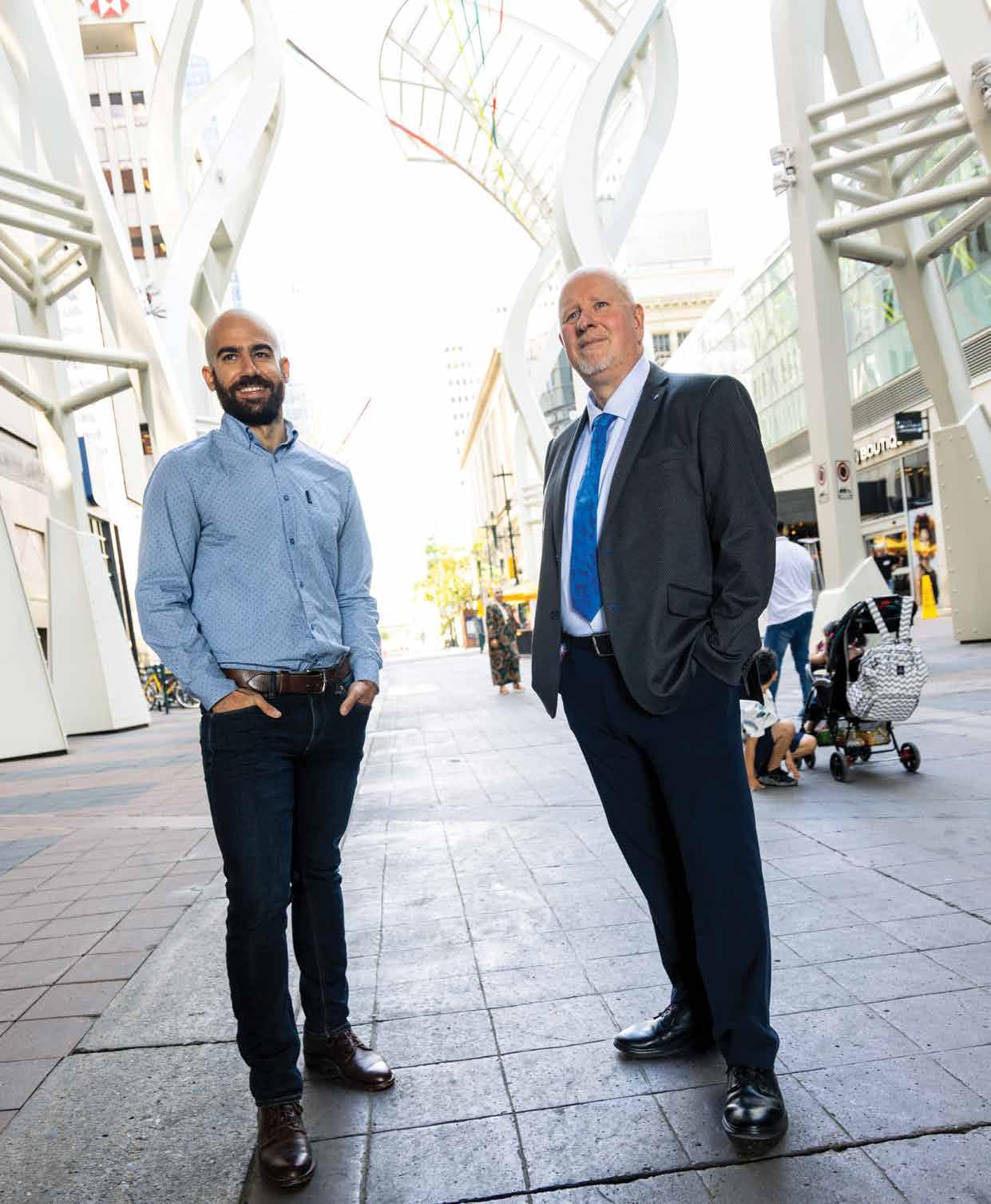
“ We’re addressing symptoms of the issue and feel helpless in fixing the root causes. ”
“ Chronic offenders are responsible for the majority of crimes in our properties. ”
actually happening and give everyone a good idea of what the current situation is.”
In January 2023, BOMA Calgary’s Public Safety and Government Affairs committees partnered with the Calgary Downtown Association to survey BOMA members to better understand the scope of the problem and improve public safety in the area. With responses from 59 buildings, they were able to compile a new set of data to bring to social agencies, the Calgary Police Services, municipal government and soon the provincial government in an effort to advocate for change.
“The beauty of it is that it’s helped us see some areas where we should be increasing our data collection,” says Lea. “We’re using this to show what we’re seeing, what problems this is causing and (then) to start conversations.”
The survey covered crimes including assaults, thefts and break-and-enters, as well as
respondents to capture a wider scope of the affected area.
BOMA is still analyzing the data and working with other social and government agencies to begin affecting change, but Lea says this is “just the first step to tackling the issues.”
In March 2023, BOMA helped launch the Public Safety Workshop Series to help tenants and building staff navigate dangerous situations.
“We deal with the world as it is, not as we wish it were,” says Suchet. “There have been times in the past where parts of downtown and the Beltline have felt uncomfortable, but they never felt unsafe, and that’s changing now. That’s a real concern for the whole city and for our downtown.”
The four-part workshop series included tenant-centred proactive training called “Be Safe, Not Sorry;” a staff-focused workshop
led the attendees to think proactively about what they would do in potentially dangerous situations and how to have a plan in mind. The “Safely Managing the Difficult Person” workshop, which Suchet says is run by Debra deWaal, offered tools on how to de-escalate tense situations.
“This really hit close to home and inspired a room of people,” says Suchet. “Everybody’s working through plans and learning from each other.”
The final workshop in the series will run in the fall and focus on Crime Prevention Through Environmental Design (CPTED), which is a multidisciplinary approach to architectural design and management of buildings, including the placement of security cameras and creating clear sightlines to discourage criminal activity.
More workshops may be added in the future, as Lea says there is a lot of work left to do to bring more people downtown and have them feel safe. By hosting workshops to equip tenants and workers, collecting data, and bringing the conversation to the government, BOMA is looking toward a safer future in Calgary’s downtown.
“We’ll be doing a lot of advocating over the next two to three years in different areas,” says Lea. “But, it’s getting the data to know who we need to advocate to, finding those points we can fix and then figuring out who needs to fix them.”
BOMA has initiated meetings with the City of Calgary and other agencies. Suchet says these conversations are just the beginning of affecting policy changes and finding resources to address the systemic issues beyond the industry.
social-disorder events like loitering, dumpster diving and public sleeping. Additionally, outcomes that hadn’t been previously accounted for were uncovered including what Lea calls “intangible costs” like lost employees or damaged reputations.
“(Once) we’ve combined all the data, we can start advocating and looking to the future,” says Lea.
The team is discussing continuing the survey either annually or quarterly to track patterns and spikes based on the season. They will also be adding the Beltline to their
about how to deal with difficult people. The first two sessions in March, “Be Safe, Not Sorry” and “Safely Managing the Difficult Person,” saw approximately 75 tenants and 65 property managers attend, and a May workshop was also offered as part of the series.
Suchet was in the room for both March workshops and says, while not everyone had experienced a direct incident, “everyone knew somebody who had something happen,” and they all wanted tools to deal with it. In the “Be Safe, Not Sorry” workshop, former Calgary police officer Debra deWaal
“I think the entire downtown community and the government is focused on this and getting aligned on this, and that type of alignment is going to be the secret sauce to success,” says Suchet. “We were sitting in a room with ourselves, the Chamber, NAIOP (National Association for Industrial and Office Parks) and the Calgary Downtown Association and that’s almost never happened before. Speaking with one voice makes it a lot easier to go to the province and say, ‘Look, we have a problem.’ It’s not just us saying this, and that goes a long way. It’s our small contribution, but we’re certainly proud of it.”
■
“I think the entire downtown community and the government is focused on this and getting aligned on this, and that type of alignment is going to be the secret sauce to success.” —Lloyd Suchet
“It’s getting the data to know who we need to advocate to, finding those points we can fix and then figuring out who needs to fix them.” —Parnell Lea
“ We’ve had over 1,200 hours of overtime worked by our staff last year to cover open shifts. ”
“ We’re losing staff and tenants alike who want to avoid exposure to personal life safety. ”
Artificial intelligence has come a long way in the past year, particularly with tools like ChatGPT, which is already having an impact on the commercial real estate sector. We ask three BOMA members to tell us how and if they are currently using AI technology, whether it has helped or hindered their day-to-day responsibilities and what they think AI means for the future of commercial real estate.
Q:Do you currently use any artificial intelligence technology like ChatGPT or other building technology, and, if so, what do you use; if you do not, why?
▶ Morley: We are using large language models like ChatGPT for data collection and analysis within our Tenant Engagement platform, and we are using AI and natural language processing for our property and asset manager dashboard. We use machine learning-enabled building automation enhancements, as well.
▶ Lee: No, we don’t use any AI technology like ChatGPT. Not for any particular reason; our portfolio just hasn’t warranted a change of this nature.
▶ Mohammed: We do not use ChatGPT, but we are using other AI technology.
Q: What is the thing you like most about using AI and/or new technology?
▶ Morley: Aspen routinely leverages new technologies in our property and asset management. What we like most about the process is becoming more efficient and effective at our day-to-day management of the assets.
▶ Lee: Predictive modelling, at least from my own personal perspective.
▶ Mohammed: With the help of feelers, detectors, beams, relays, radars and other smart components, combined with intelligent electronics, building automation technology takes recourse to the central computing system to operate effectively and efficiently.
Q:What is the most challenging thing about using AI and/or new technology?
▶ Morley: Finding the right fit. There are lots of providers suggesting their system can help save time, money and effort, but not all solutions are equally beneficial to our operations.


▶ Lee: The most challenging thing about using AI is the lack of practicality and real-world considerations.
▶ Mohammed: The data on building system status should be evaluated perceptively. It calls for concentrated processing of huge amounts of data, with different variables to be taken into consideration.
Q:What is your favourite piece of technology that has made your daily life easier?
▶ Morley: Without question, it is the Aspen app. It’s both a tenantengagement tool, as well as a property- and asset-management tool.
▶ Lee: I like phone cameras and video calls.
▶ Mohammed: I have been running AI applications for over a year and I like it because it gives better control and comfort for the tenants and energy saving.
Q:How do you see AI technology like ChatGPT impacting commercial real estate in the next decade?
▶ Morley: Any task that is repetitive is ripe for automation, and AI and machine learning provide great solutions for repetitive tasks. Large language models like ChatGPT will also offer base-level customer service support, answering basic tenant questions about our properties.
▶ Lee: I think building operations will become more automated and there will be more information used more fulsomely.
▶ Mohammed: Technology is improving and AI tends to dole out several tailor-made solutions that are highly suited for effective and wellorganized building management.

Q: If you could develop the perfect piece of technology, what tasks would you want it to take off your plate?
▶ Morley: It’s not really about taking something off of our plate, it’s about leveraging technology to enhance our capabilities. Technology makes us better, more efficient and more effective at what we do.
▶ Lee: I would definitely like to see better and more accurate financial technology to alleviate processing volume.
▶ Mohammed: I would integrate machine-learning solutions along with other relevant methods for all building equipment.
Oxford Properties is strongly committed to environmentally responsible practices and focused on an effective sustainability strategy.
integrating ESG consideration across its entire asset portfolio and business activities; continuing to focus on tracking its activities with data; and decarbonization commitments: to achieve a 50 per cent reduction in carbon intensity by 2030, working towards net-zero by 2050.
On the social and governance side, Oxford is a leader when it comes to inclusion and diversity. An employee-led committee promotes organizational activities and makes recommendations to leadership in support of a safe and inclusive workplace. In fact, over 80 per cent of people leaders completed Conscious Inclusion training and in Oxford’s annual engagement survey, nearly 90 per cent of participant employees said the company provides an inclusive workplace.
“We are committed to promoting inclusion and diversity not only with our employees, but within our building communities as well,” says Hubaczek. “We regularly host events to promote inclusivity, encourage awareness, education, and engagement, in support of building community.”
Leading by example is the cornerstone of Oxford Properties’ business model, and that vision stretches well beyond the company’s position as a global leader in real estate investment, development and management.
Recognizing the importance of an environmental, social and governance (ESG) strategy, Oxford has a long history of prioritizing such measures for its customers, investors, employees and, most importantly, the community.
“For us, it’s all about embedding ESG across our business lifecycle from investment to operations. We have published clear, metricbased performance targets and reported on progress annually since launching the Oxford sustainability program almost 20 years ago,” says Dominik Hubaczek, vicepresident of office operations for Oxford. “We have identified standards that apply across our global business, and principles that are applied at a local level by our leaders.”

Oxford has outlined three main goals for its sustainability program, which include
“Oxford strategically focused on data collection and education, which has resulted in setting the stage for enhanced tracking, increased employee knowledge of ESG and even had the benefit of reassuring the business that we were already on the right track in several areas,” says Hubaczek.
With the knowledge of how it's performing, Oxford can continue to push forward. In Calgary, all Oxford’s office towers meet the highest industry standards in sustainable building practices. One hundred per cent are BOMA Best certified, LEED Platinum or Gold certified from the Canada Green Building Council, and achieved WELL building certification in 2021.
Oxford also promotes sustainable practices by encouraging recycling and upcycling in its Calgary buildings. “For example, our Centennial Place building diverts 93 per cent of overall waste generated at the building from ending up at the landfill,” says Hubaczek. “At our Bow Valley Square complex, an estimated 544 metric tonnes of recycled material was diverted from the landfill last year.”
This can be seen through Oxford’s involvement in a variety of events such as supporting Pride, sharing Canadian military history and celebrating Indigenous culture. At its 33rd annual corporate Stampede event, the Oxford STOMP, the company partnered with the Calgary Food Bank to collect more than 400 pounds of non-perishable food donations from its portfolio customers.
Though ESG strategies have recently become more of a standard business practice, Oxford has long been a leader in Calgary and beyond, and will continue to set the standard in the future.



For over 60 years, Oxford’s environmental, social, and governance (ESG) practices have connected people to exceptional places.



400 Third Bow Valley Square

Centennial Place
Eau Claire Tower

Michael Kennedy wasn’t aware of all the opportunities in the commercial real estate sector when he transitioned out of construction seven years ago and he hasn’t looked back
ichael Kennedy knew he’d chosen to work a tough, physically demanding job when he began his electrical apprenticeship in 2005. And, for the decade he worked as a residential and commercial electrician with Amelco Electric, it was as physically demanding a role as he expected.
“Many men who I worked with dealt with bad back pain and hip pain; body aches from years of hard work,” says Kennedy. “Being in the trades is a very demanding job, but a lot of people within the trade don't really think about that.”
Yet, Kennedy wasn’t the type to plan decades ahead when he first started his career, either. He moved to Calgary from Nova Scotia when he was 19 years old and got a job in a Cartwright Lighting warehouse. It paid the bills and he stuck with it for seven years. But, driven by a desire to grow professionally, learn more and earn a higher salary, he transitioned into the electrical trade in 2005, earning both his Red Seal and Master Electrician certifi-
Mcates from the Southern Alberta Institute of Technology.
Ten years of work in the construction field, often in sub-zero weather conditions, took its toll, and Kennedy decided it was time to make a change.
“An opportunity in commercial real estate with Oxford Properties came along and I took it, even though I didn't know anything about the real estate industry whatsoever,” says Kennedy, now 45 years old. “I even waffled about the job in the beginning. I wasn't sure I would stick with it because it was totally different from what I’d done before.”
just over one million square feet of residential property. Kennedy’s role has evolved over the years, and he was presented with more challenges and responsibility as he gained experience. These days, Kennedy is the supervisor of electrical and technical operations, Eau Claire District at Oxford Properties, overseeing three buildings: 400 Third, Centennial Place and Eau Claire Tower. Put another way, Kennedy is in charge of roughly three million square feet of commercial real estate.
“There’s a lot of opportunity to advance up the chain, with a little bit of education along the way,” says Kennedy. In fact, he is currently working on completing certificates that would open doors for him to advance and become either a facility manager or a property manager, depending on the route he chooses to take his education. (Yet another perk is that Oxford Properties pays for this education.) “The beauty of this industry is that, with a good company, you can move anywhere as long as you put the effort in.”
“The beauty of this industry is that, with a good company, you can move anywhere as long as you put the effort in.” —Michael Kennedy
While he initially made the job transition with his health in mind, the professional growth opportunities, day-to-day job variety and industry camaraderie made Kennedy quickly realize he’d made the right decision — and he hasn’t looked back.
Having advanced as far as he could as an electrician, Kennedy appreciates the many opportunities he has to grow professionally while working in commercial real estate. His first job in the industry was as an electrical supervisor with Oxford Properties, where he managed
Kennedy says each day is different at Oxford Properties. Elements of his role still require hands-on electrical work, like replacing outdated light fixtures with LEDs. There is a customer-service side to his work as he handles electrical and technical requests from tenants in all three of the Eau Claire buildings he oversees, both by himself and by delegating the work to contractors. He coordinates annual building projects, like electrical shutdowns. While that’s also brought challenges — notably time-management ones — the industry’s atmosphere and countless perks make up for it.
“I like the team aspect of things in the commercial real estate industry. Especially as a residential electrician, you're counting on one other person at all times,” says Kennedy. “But, at Oxford Properties, and in the commercial real estate sector in general, you can lean on a lot of people. It's kind of like a family.”
Now, seven years into his career in this industry and having experienced all the benefits that come with it, Kennedy says he should have made the transition into commercial real estate a long time ago.
“My body is a lot healthier now and I get respect from my colleagues,” says Kennedy. “I used to feel like just a number, but I don't feel like that at Oxford. I enjoy coming to work.” ■
There’s a definite sense of optimism among employees working in the commercial real estate industry, says Stefanie Shanahan, director of human resources, Canadian office division, with Brookfield Properties.
“Our tenants are bringing their employees back to the office, so downtown Calgary is active and thriving again. The retailers and food courts are busy again and there seems to be an energy that has returned to the downtown core,” says Shanahan. “There are events bringing people back together and the office workers seem to be celebrating this return to social connection and collaboration that was missing for a long time.”
Despite an upbeat mood, the current talent crunch and, of course, The Great Resignation (a trend that began during COVID-19 where a large number of employees have voluntarily resigned from their positions) mean the industry needs to go beyond the bare minimum to attract and keep its people.
“Competitors are fighting over the same talent, so players in the industry have to be
creative (when considering) ways to attract and retain that talent — and that's exciting,” she says.
Here are just a few examples of how two commercial real estate companies — Brookfield Properties and QuadReal Property Group — are attracting and retaining talent in Calgary.
Brookfield Properties participates in career fairs at post-secondary institutions like the University of Calgary, Mount Royal University and Southern Alberta Institute of Technology, and hires 13 summer-student positions specifically for its Calgary office. Positions range from corporate internships in marketing and asset management, to construction services and property-facing internships in building maintenance. “A lot of our summer students return after they graduate and are hired on full-time, so it is a very good candidate pipeline for us,” says Shanahan.
“Competitors are fighting over the same talent, so players in the industry have to be creative (when considering) ways to attract and retain that talent — and that's exciting.” —Stefanie Shanahan
To attract and retain talent, Brookfield Properties tries to go above and beyond with its benefit offerings. “Coming out of the pandemic, we identified a need for better mental-health coverage and more support in the workplace for people struggling with their mental health,” explains Shanahan, saying services that go beyond counselling, like access to the meditation app Calm, are offered.
This year, Brookfield Properties increased its education allotment for each employee from $1,800 a year to $3,500 a year. Employees can choose to use this however they choose to improve their skills or develop in a way that will nurture their future professional growth.
Shanahan says the business’ focus on succession planning also helps with talent-retention. “We try to identify people quite early on in their career as being high-potential, then we take different approaches to develop them into a more senior-level employee, whether that's through external training, job shadowing or mentorship.”
QuadReal Property Group employees get two paid volunteer days annually and the company offers charitable donation matching up to $500 per employee. “From 2021 to 2022, more than 175 charities were supported with those donations,” says Sharlene Quian, general manager at QuadReal Property Group.
QuadReal celebrates the talent that exists within its team, which boosts morale and helps retain employees. “We have an annual award of excellence as part of our recognition program, where QuadReal staff nominate colleagues. The winners are announced via a national virtual event,” says Quian. ■


In 1956, the Logic Theorist, a program designed by Allen Newell, Cliff Shaw and Herbert Simon to problem-solve using human skills, was considered by many to be the first true artificial intelligence (AI). The program acted as a catalyst that launched AI research for the next 20 years. In 1997, world chess champion and grandmaster Gary Kasparov was defeated by IBM’s Deep Blue, a chess-playing computer program; a few months later, during a competition for the
Chinese abstract strategy board game, Go, Google’s Alpha Go beat Chinese Go champion Ke Jie. Then, in 2017, a system called Libratus beat four professional poker players at the same time. Despite these advancements, Geoffrey Hinton, known as the “Godfather of AI” has publicly stepped forward to speak of AI’s potential, warning that, if left unchecked, it could one day be smarter than people. However, according to a recent Goldman Sachs study, the impact of advances in AI could also be comparable to the printing
press, which standardized language, spread ideas, increased literacy and grew the printing industry.
In the future of building management, this change is a promising shift already being implemented with open doors.
Building management systems (BMS) have been around for more than 50 years and have seen great leaps in advancement. From the
“AI could help to automate some simple tasks so that our people can focus on the most important things and optimize the operation of building equipment to maximize comfort, energy consumption and costs.” —Dave Sylvester
invention of the electric thermostat in the late 1800s, to the rise of home automation in 2005, BMS has come a long way. Now, with the integration of AI, BMS is becoming even more capable and complex.
“In my industry, there are lots of opportunities to be more proactive in reducing utility-consumption, costs of contracts, and proactively identifying and resolving customer issues,” says Dave Sylvester, senior manager, portfolio engineering, at Oxford Properties.
AI analytics are currently being implemented to help improve day-to-day operations, reduce inefficiencies in heating and cooling or lighting, and lower costs across building platforms, essentially making buildings smarter and more responsive. Current BMS work by helping to monitor, control and report on any smart-building echnology systems, from video surveillance to HVAC control and programmable lighting. BMS utilizes the collected data to compile summaries of each system, which are then sent to the building operator who manually adjusts, configures and updates the systems, as needed.
While a BMS has long been a handy tool as a single point of control for entire buildings, it’s a process that still takes time and constant monitoring to keep tenants happy and building costs low. Some AI systems remove that process, gathering data and making necessary changes to improve efficiency.
“AI could help to automate some simple tasks so that our people can focus on the most important things and optimize the operation of building equipment to maximize comfort, energy consumption and costs,” says Sylvester.
It’s not a far-off concept either, for Oxford Properties. In 2018, the company broke ground on a new building called The Stack, a 555,000-square-foot, 37-storey office development in Vancouver, B.C. The building features smart technology, bike stalls and a 21-plug electric vehicle charging station. The smart-technology system built into The Stack comes from a company called Kode Labs, a software company that specializes in smart building software. Within The Stack, the entire BMS is contained within a unified dashboard, also known as a single pane of
glass, that presents data from multiple sources in one location. As a result, the system can help save 10 to 30 per cent on energy and operational costs and 20 to 50 per cent on maintenance.
The idea of a single pane of glass in modern buildings is a shared ideal among building owners and operators.
In building management, the system draws from existing data in the building. Broad AI is where most public fears stem, and is the type of AI Hinton is warning about. While broad AI hasn’t made it to the public market, programs like ChatGPT are already sparking concerns about unfiltered AI access and development. But, for building managers and operators, skepticism is a healthy part of the job.
“There is an element of skepticism, and that’s okay because it gets us thinking about how AI can help us. We have many options, and there’s a lot of thoughts on the table for AI,” says Curtis.
“The ultimate goal is to be able to link systems together and better understand and improve our environmental impact, maintaining sustainability and our ultimate goal of driving a net-zero environment.” —CJ Curtis
“The ultimate goal is to be able to link systems together and better understand and improve our environmental impact, maintaining sustainability and our ultimate goal of driving a net-zero environment,” says CJ Curtis, operations manager for Calgary’s Jamieson Place, 240FOURTH and Intact Place with QuadReal Property Group.
As promising as the integration of AI systems seems now, Sylvester warns against jumping straight in. “Start with the low-hanging fruit technologies and, if it doesn’t make sense today, look at something else,” says Sylvester. “Too often, I see people starting with a technology solution to a problem that may not even exists.”
While the technology is advancing, current AI isn’t the same as sentient, intelligent AI in futuristic movies and shows like Westworld Today’s AI is “narrow,” meaning it is programmed to perform a singular task such as playing chess, Go or monitoring an HVAC system. While these AI systems can perform a
The potential of AI in building management focuses on the possibility of AI driving forward green-building goals like energy-efficiency, zero-carbon buildings and renewable energy sources.
Ecopilot AI is one company working with AI to provide real-time HVAC efficiency and greener results in buildings. The AI program uses real-time building data, five-day weather forecasts and building thermodynamics to optimize the automation system in real-time. The system then adjusts heating, cooling and ventilation every two minutes to maintain optimal comfort in the building at all times.
“AI is really going to help support those green efforts by doing things smarter, more holistic and looking at more than what we humans can handle.” says Nick Kendrick, head of business development at Ecopilot.
“AI is really going to help support those green efforts by doing things smarter, more holistic and looking at more than what we humans can handle.” —Nick Kendrick
Companies such as Kode Labs and Ecopilot are driving forward a type of intelligent BMS that is showcasing the positive potential of AI. Yet, while the world of building management is again seeing a change, the approach to risk management, cautious optimism and diligent care that has always been a trademark of building managers is not changing when navigating the future of AI management.
task in real time, that information only comes from a specific dataset. Siri, for example, is a narrow-AI system designed to process spoken languages, enter them into a search engine and provide accurate results, such as the weather forecast.
“We have to start somewhere, but not do too much too fast,” says Curtis. “We don’t want to get caught with our tails between our legs. Taking things one step at a time, one platform at a time and operating them in the most efficient way possible is a win for us.” ■
Calgary’s industrial real estate sector has experienced a surge in recent years, with vacancy continuing to hover around two per cent. This level of vacancy is notably low considering the high demand that persists within this market.
To meet demand, the market is responding with several million square feet of new buildings under construction, but the product today has evolved where innovation, technology and environmentally friendly structures have become the norm.
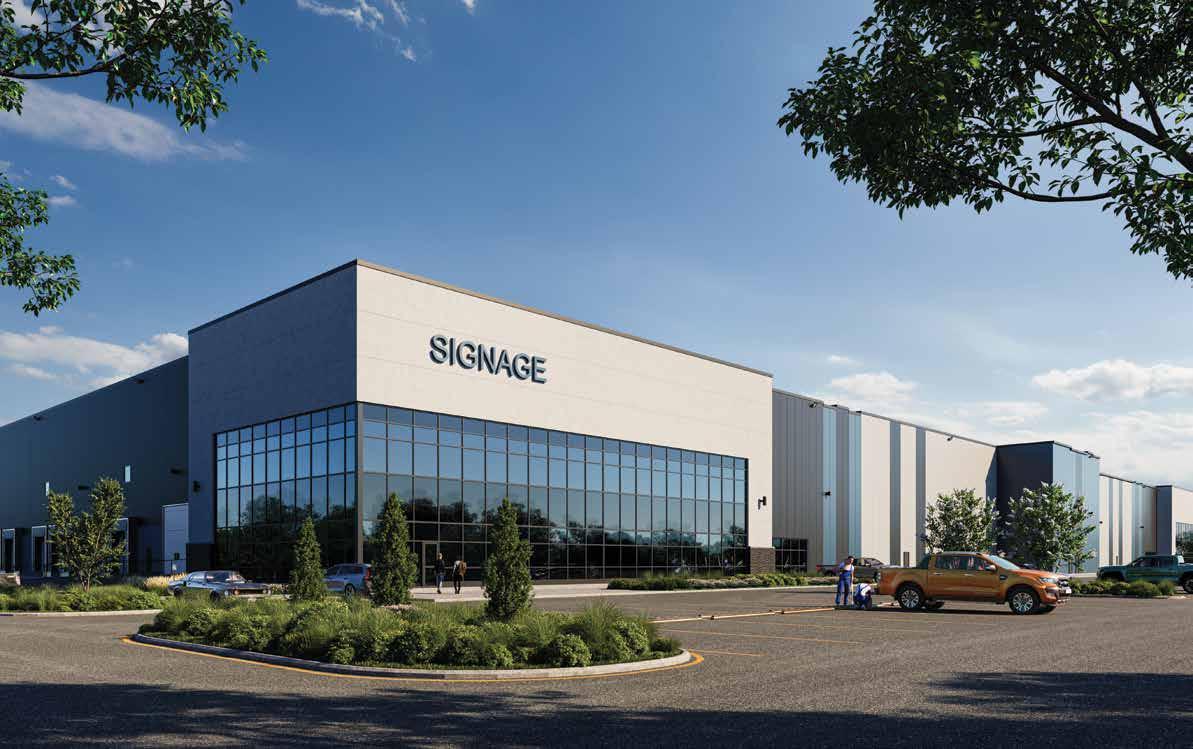
Josh Magnussen, senior vice-president and partner of commercial real estate firm Colliers, says industrial real estate has certainly evolved over the years.
A large part of that evolution is an emerging trend with environmentally friendly buildings.
As an example, Magnussen points to commercial real estate developer Hopewell Development, which is building a 543,398-squarefoot, zero-carbon facility just east of the city
in the Citylink Logistics Centre in Rocky View County.
“That will be the first of its kind available for lease in Calgary and you are seeing other groups considering it and chasing green certifications. I’ve heard of other developers looking at the zero-carbon ready building,” says Magnussen. “That means (the building) could be altered down the road when they deem it appropriate.”
“I think the larger corporations from a tenant standpoint have more of a desire to
passive design principles to significantly reduce the amount of heating energy required to condition the facility. It involves a series of carefully planned measures to minimize heat loss, which includes adopting a high-performance building envelope, constructing air-tight assemblies and equipping vertical dock levelers to prevent heat loss through overhead doors. The facility’s ventilation system is equipped with an energy recovery ventilator that regulates and purifies fresh air by recovering lost heat from the out-going air
“That will be the first of its kind available for lease in Calgary and you are seeing other groups considering it and chasing green certifications. I’ve heard of other developers looking at the zero-carbon ready building.” —Josh Magnussen
see those features in a building, and so do the owners of the assets, especially the institutional capital. It’s definitely a growing trend with them,” says Magnussen.
Citylink Logistics Centre Building 2 applies
stream, thereby reducing the energy needed in preconditioning fresh air.
To promote sustainability practices, the facility harnesses roof-mounted solar photovoltaics to generate on-site energy, which offsets
“Things really started to change 10 years ago as far as site coverage changing, and I think the first thing was front loads going out of fashion and changing to the model we generally use today.” —Phil Brown
the remaining carbon emissions through high-quality carbon procurement practices.
Hopewell says occupancy for the building, which boasts 40-foot ceiling heights, is April 2024 and will see 40 per cent energy savings, 22 per cent energy cost savings and 11 per cent greenhouse gas savings.
“I’m almost 20 years in the industry and I would say industrial has changed, as far as we’re concerned, pretty significantly,” says Phil Brown, vice-president, acquisitions and leasing, industrial for Hopewell Development.
Starting with overall site planning, the traditional model was to maximize site coverage, which usually meant front load buildings with offices all on the same side. Truck courts were smaller and tighter and the goal was to get the most building space on the site that you could and less about what the tenants actually required.
“Things really started to change 10 years ago as far as site coverage changing, and I think the first thing was front loads going out of fashion and changing to the model we generally use today. On mid-bay products, there are front-park, rear-load buildings where your offices are in the front of the building, all of your car parking is in the front of the building and then you’re loading areas are at the rear of the building away from the street,” explains Brown, saying this change occurred for functionality, safety and planning standpoints.
Brown says the inside of an industrial building has changed over the years as well, with higher ceiling heights for more storage space.
Along with that came early suppression, fast response (ESFR) ceiling-mounted sprinklers.
“Even column spacing has gone wider for efficiency of racking,” says Brown. “Having a speed bay at the rear of your warehouse and dock area that can be anywhere from 60 to 75 or 80 feet so you can unload a full 53-foot trailer in that speed bay before you have to take it into the racking. Those are all things you didn’t do 10 or 15 years ago in your buildings.”
Generally, there are more employees in industrial buildings today than there were years ago, so the condition of the workspace becomes important because companies are competing for labour. Brown says that means companies are looking for quality spaces for people to work – good air flow and adequate lighting, leading to the efficiency of the building, which means more environmentally friendly buildings on the market.
“Building performance targets continue to be raised in terms of comfort, energy and water metrics. We're headed toward a high-efficiency, low-carbon future, and the industry is moving quickly to explore and implement solutions,” says Graham Halsall, director,
The conversation has shifted, with tenants having more pressing demands and requirements. This has resulted in increased automation capabilities for certain logistics and warehouse operations through improved electrical systems and the grid.
There is also better daylight access in some buildings for worker health, well-being and productivity.
“Activating industrial building rooftops has become an increasing priority in recent years,” says Halsall. “Solar is becoming a massive opportunity with record-high utility prices, projected carbon tax escalations and incredibly volatile electricity rates (in a market with a high carbon intensity electricity grid).”
Some industrial buildings are also utilizing
“Building performance targets continue to be raised in terms of comfort, energy and water metrics. We're headed toward a high-efficiency, low-carbon future, and the industry is moving quickly to explore and implement solutions.” —Graham Halsall
sustainability and risk management of ONE Properties. “With a focused ESG program backed by trustworthy data, real estate leaders can remain competitive and have a seat at the table to influence national and international industry direction.”
“Innovation in the industrial real estate market can be summarized in two key themes. First, building materials, HVAC systems and design criteria are more focused on durability, resilience and decarbonization priorities when compared to five years ago. Second, the tenant-landlord relationship has matured in recent years and continues to evolve. Typically, the landlord would collect rent from the tenant, and the tenant would call the landlord if there's a building-related issue. It was a rather hands-off relationship for industrial assets. Now, the dynamic is shifting to where the landlord and the tenant recognize the value of partnering together to achieve similar corporate ESG priorities.”
“The current industrial vacancy is 1.6 per cent with a sub two percent vacancy market which favours landlords and sellers.” —Marshall Toner
rooftop space for gardens and beehives.
Marshall Toner, managing director and national lead, industrial, JLL Canada, says Calgary’s industrial market is still buoyant and strong.
“The current industrial vacancy is 1.6 per cent with a sub two percent vacancy market which favours landlords and sellers,” he says. “The inventory for industrial serviced land is low in both Rocky View County and the City of Calgary, which will put upward pressure on land cost.”
Calgary's industrial cost is a result of its geographic location, land cost, availability of product and lease rate.
Magnussen says Calgary is fortunate in being a smaller market compared to larger centres, such as Toronto and Vancouver. The ability to drive virtually anywhere in Calgary in about 30 minutes is attractive to prospective industrial tenants compared to other major markets in Canada and the U.S.
“That’s allowed for some tenant flexibility when they’re evaluating Calgary,” says Magnussen. “There has been a trend for more centrally located fulfillment centres. You see that in the Amazon facility off of 42nd Avenue (S.E.).” ■
In a building beautifully adorned with local Indigenous art, staff at Taza Development Corp. are doing incredible business out of their modest office space. The Taza development — a joint venture between private real estate company Canderel and the Tsuut’ina Nation — is one of the largest Indigenous development projects in North America.
The Three Villages of the development — Taza Park, Taza Crossing and Taza Exchange — are connected by Tsuut’ina Trail, which is part of the southwest Calgary ring road. Each

village has been designed around distinct principles impacting textural elements, streetscapes, wayfinding, natural areas and public spaces.
The partnership has required great intentionality to be successful, working to ensure industry best practices align with direct Indigenous participation and leadership.
“Tsuut'ina and Canderel mutually agreed with the importance of incorporating cultural and traditional values at the core of the development, which we have done by setting cultural and traditional review processes in
the development permit application,” says Bryce Starlight, vice-president of development at Taza Development Corp. Starlight says they included several pages of guidance documentation in the design guidelines. This helped to ensure developers had a clear vision of what content is applicable to the development, eliminating the guesswork of including cultural content in the designs.
The Taza Park Water Reservoir, for example, incorporates elements of Tsuut’ina culture, as well as sustainable and architectural features in the design. Design elements reflect cultural
“Tsuut'ina and Canderel mutually agreed with the importance of incorporating cultural and traditional values at the core of the development, which we have done by setting cultural and traditional review processes in the development permit application.” —Bryce Starlight
values of Tsuut’ina with a security fence inspired by a beaver dam, which is an acknowledgement of the Tsuut’ina as “Beaver People,” as they are known. The wood elements are inspired by the structure of a teepee. The fence offers structural support for solar panels, while also providing an eye-catching landmark in Taza Park. The pumphouse itself is visible, providing an educational opportunity within the Eagle Landing site to inspire conversation around water conservation at Taza.

Respect for water, energy usage and conservation has been instrumental in informing engineering and design. “We have put a lot of time and effort in aligning our stormwater systems with the natural topography of the site to allow for us to maintain natural features in the ecosystem,” says Starlight. “Also, we have looked at opportunities to reduce vegetation loss and create interconnectedness between green features and watercourse crossings to allow for nature to have unob -
structed access between water features and habitat. We are also working with tenants to develop strategies to increase opportunities for solar generation within the site.”
Taza is founded on a set of standards that define an innovative framework to keep Tsuut’ina values, culture and ways of knowing at the forefront.
Of course, the project faced an unforeseeable obstacle with the onset of the COVID-19 pandemic, but, proceeding with caution, making evidence-based decisions kept the project on track.
The project gained ground exponentially after the initial advances, as one success opened doors for the next. “The most satisfying aren't the firsts — the first opening, first shovel in the ground, etc. — but the tenth opening, as it showed there is some gravity to the site that is drawing people in,” Starlight says. “The first is great, but I always worry that it's a flash in the pan. The later tenants
Opposite page: Bryce Starlight looks across the valley at The Three Villages, as he aims to marry Indigenous culture with Taza's new development in southwest Calgary. The venture will include Taza Park, Taza Village and Taza Exchange, and is a collaboration between private real estate company Canderel and the Tsuut'ina Nation. Left: Starlight overlooks the construction of the Taza Park Reservoir pumphouse. Below: An artist rendering of what the pumphouse will look like once completed.
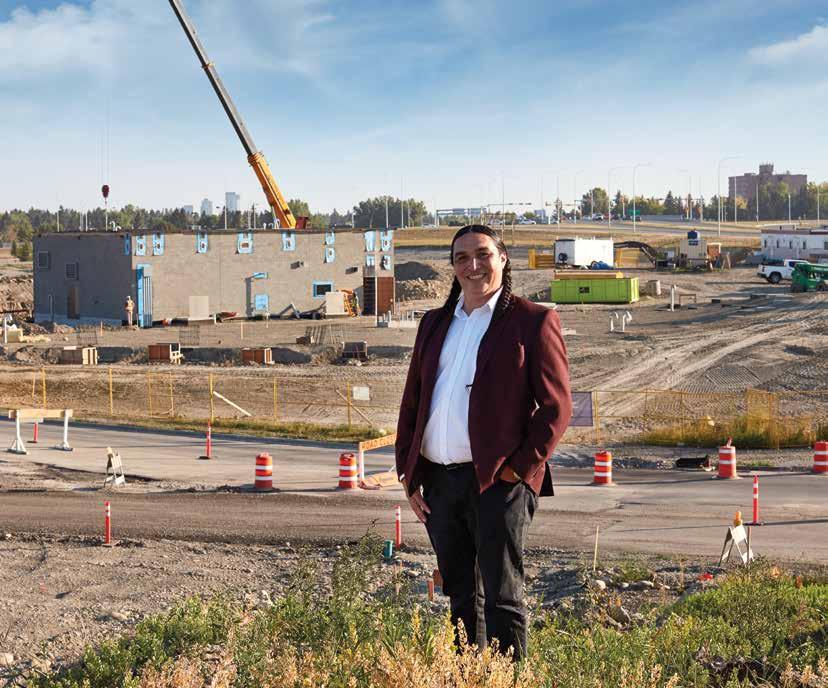
show there is some inherent stability with our process and development.”
There was, of course, a steep learning curve, and Starlight has been forthcoming in sharing that experience in the hopes other Indigenous communities that follow suit will be able to anticipate them, if not avoid them altogether.
“Be clear on whether the development is an economic venture or a social venture,” says Starlight. “The two can support each other, but there will be times when the ultimate choice is between profit/revenues or employment and Indigenous social advocacy, and one or the other will have to be your primary evaluation criteria.”
Starlight’s hope for the future is that grassroots, meaningful involvement, engagement and ownership of the concept remains with the Tsuut'ina people.
“I hope this site will have a building that has both been designed and engineered by Tsuut'ina citizens,” says Starlight. “There's such opportunity for our members to participate in the development, and I hope we at Taza can do what we can to encourage and support their participation at Taza and elsewhere.” ■

Read behind-the-scenes details about how some of these filming locations came to life in Calgary
It’s no easy task turning a highly popular video game into a live-action TV series, but the HBO adaption of The Last of Us, staring Pedro Pascal as Joel and Bella Ramsey as Ellie, has already become the most-streamed show in the history of HBO Max. While the world of The Last of Us is set in the U.S., the show was filmed in more than 180 locations across Alberta, including in Calgary. Read on to learn where some of the show’s iconic locations were filmed and how the behind-the-scenes magic brought it all to life.
– Ep. 2 “Infected” Calgary: SAIT Senator Burns Building
Named in honour of Patrick Burns, the historic SAIT Senator Burns Building serves as a place of learning during the day and moonlighted as a backdrop for The Last of Us by night.
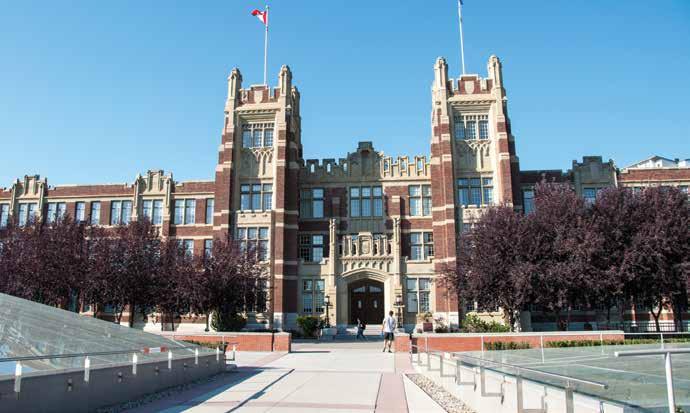
The scene takes place on the fourth-floor lounge, but an office was built by the show’s art department to create the right look. A later hospital scene in Jakarta, marked with familiar blue-tiled walls, is the Senator Burns basement.
– Ep. 5 “Endure and Survive”
Calgary: Inglewood Brewery
Unlike the video game's terrifying experience in the underground tunnels, The Last of Us offers Joel, Ellie, Henry and Sam a temporary respite in an underground classroom with bright murals, toys, art supplies and comics.
The scene was filmed beneath the old Inglewood Brewery, which provided the natural “dankness” the production team wanted.

The Bostonian Museum – Ep. 2 “Infected” Calgary: Canadian Bank of Commerce Building

In the second episode of The Last of Us, Joel tests some Cordyceps fungus tendrils outside of the brick-clad Bostonian Museum to ensure they are dead before venturing inside with Ellie and Tess on route to the Massachusetts State House. In realty, the building is the (uninfected) historic Canadian Bank of Commerce, built in 1912 by Victor Daniel Horsburgh.
– Ep. 5 “Endure and Survive” Calgary: Calgary Film Centre
While heading through a darkened neighbourhood, Joel, Ellie, Henry and Sam come under fire from a sniper.
The scene of the battle was not the work of CGI. Located at the Calgary Film Centre, the entire set was built from the ground up, including the cul-de-sac, the abandoned buildings and scene of the battle. The full set was built in nine weeks and filmed over the course of four weeks.
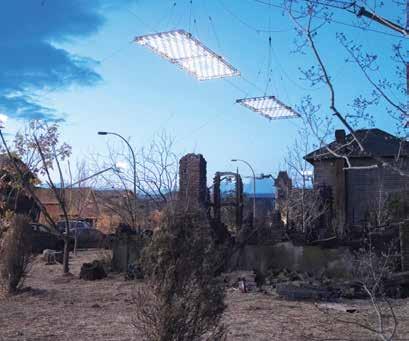
5 The Tipsy Bison – Ep. 6 “Kin” Calgary: Heritage Park, Wainwright Hotel
Having finally reached Jackson, Wy., in the show, Joel and Ellie are reunited with Tommy. The transformed town of Canmore, Alta., served as Jackson, with several sets built to change the look and feel of the location. Later, Joel and Tommy head to a local bar,
While The Last of Us brought attention to the potential Alberta can bring to the film industry, it isn’t the first to showcase Alberta’s beauty. The Revenant and the Fargo and Heartland TV series are just a few of the many productions featuring familiar scenery. However, The Last of Us is the largest to be filmed in Alberta’s history and one of the biggest in Canada. But, before filming took place, between 2019

the Tipsy Bison, for drinks and chance to chat. For this, real bar used in the scene, is the one in the Wainwright Hotel in Calgary’s Heritage Park, which has a long history of being used for films and television series, dating back to the 1970s.

6 Liberty Gardens – Ep. 7 “Left Behind” Calgary: Northland Village Mall
In this episode, Ellie and Riley sneak out to visit Liberty Gardens, a local mall where Riley shows off the “five great wonders” of the mall. This location was shot at the Northland Village mall, which was scheduled for partial demolition and be redeveloped into an openair mall. Because of the demolition plans, the producers were free to transform the interior of the mall to make it look like a post-apocalyptic setting with broken floors, muddied walls and vines growing everywhere.
7 Abandoned Building – Ep. 9 “Look for the Light” Calgary: Calgary Zoo, Nabo the bull Masai giraffe
Throughout The Last of Us, giraffes are used as a symbol of hope, innocence and life. After the harrowing encounter Ellie experiences with David and the cannibals, Ellie and Joel come face-to-face with a live giraffe. The scene provides a heartwarming moment in the episode, as Ellie feeds the giraffe. While the scene around them is set in a broken-down building, the actual scene was shot using green screen props, but the giraffe was real. ■

and 2021, Calgary’s film industry already more than doubled, going from $225 million in production volume to $560 million.
“The province has embraced television with good reason,” says Luke Azevedo, Calgary film commissioner and vice-president, creative industries and operations at Calgary Economic Development. “This is an industry that puts a positive spotlight on Alberta, creates jobs and brings investment into the province at a very significant level.”
With The Last of Us showcasing what can be done in Alberta, it’s only a matter of time before the province takes the spotlight again. “We are now seen as a location that can deal with any size and scope of project and not only do the project, but do it extremely well,” says Azevedo. ■
403-250-7878



ANALYSIS: DOWNTOWN/BELTLINE
Calgary’s downtown market moved forward cautiously in early 2023, while a robust job market and high in-migration numbers maintained the local economy. As several office renovations are moving forward, the energy sector continues to lead leasing activity, with nearly half of all leasing activity.
ABSORPTION:

79,980 square feet
1.35M square feet

CLASS AA BUILDINGS: The class AA market remains tight as flight-to-quality continues to be a major theme playing out in the office market. Many landlords are moving forward with capital renovations to their properties. These renovations are tending to be A class properties that have lost their edge in retaining and attracting new tenants. Modern amenities, common areas and fixtures highlight the search for differentiators.
DEMAND: Calgary’s office market continued to lean on the fundamentals that powered it through a strong 2022. A robust job market and booming in-migration numbers are sustaining the local economy, and the consensus is the city is well-poised to face any looming downturn.
ECONOMIC OUTLOOK: There was a collective sense of caution throughout the early parts of 2023, and the CRE sector was no exception. With the economy continuing to stagger, capital was slow to move and transaction activity decelerated.
square feet

Like Calgary’s downtown, the Beltline market is approaching the year with constraint, as absorption was down more than 53,000 square feet in the first quarter. Finance and engineering sectors made up half leasing activity in the region.

KEY DRIVERS: CLASS AA
BUILDINGS: No Class AA in the Beltline
DEMAND: Calgary’s office market continued to lean on the fundamentals that powered it through a strong 2022. A robust job market and booming in-migration numbers are sustaining the local economy, and the consensus is the city is well-poised to face any looming downturn.
ECONOMIC OUTLOOK: There was a collective sense of caution throughout the early parts of 2023, and the CRE sector was no exception. With the economy continuing to stagger, capital was slow to move and transaction activity decelerated.
ANALYSIS: INDUSTRIAL
Industrial: The industrial market continues to set a high bar in 2023. Despite vacancy rates rising slightly in the first quarter (currently at 2.31 per cent), demand remains high, with absorption at nearly 665,000 square feet in Q1 of 2023.
ABSORPTION:
664,745 square feet
Amount of positive absorption in Q1 2023.
LEASE MARKET:
2.31% 4.14% 0.59% Vacancy Rate Availability Rate Sublease Vacancy Rate
5.96M square feet
FUTURE OFFICE
SPACE:
4.93M square feet
KEY DRIVERS:
Amount of industrial space under construction (as of Q1 2023).
Amount of additional industrial space in proposed/ planning stage.
1 2
DEMAND: The industrial market continues to see high demand, putting constraints on the supply side for new construction deliveries to alleviate the pressure. While vacancy rose slightly in the first quarter of 2023, the pace of leasing activity indicates that this may only be a temporary reprieve. At the current pace, the market is not expected to approach equilibrium until at least some time next year.
ECONOMIC OUTLOOK: Despite the headline of record-high vacancy, suburban occupiers are showing singes of improving strength. Record in-migration, public projects including infrastructure investment and the strengthening oil and gas and renewable energy industries all have positive effects on suburban demand. The year ahead will continue to see the interplay of a strengthening user market versus negative impacts from changes in space utilization.

Suburban: With tenants continuing to right-size their space and large spaces brought to market outweighing leasing activity, Calgary’s suburban market recorded its highest vacancy rate ever at 26.4 per cent, surpassing the previous high of 25.9 per cent in Q4 of 2021.

26.4%
FUTURE OFFICE SPACE:
-174,080 square feet
118,000 square feet
TOTAL SUBLEASE VACANCY SPACE:
NET ASKING RATE:
INVENTORY BY REGION:
NOTABLE TRANSACTIONS:
897,933 square feet
$15.25 / square feet
One Executive Place: Government of Alberta – 26,910 sq. ft. (renewal)

KEY DRIVERS:
DEMAND: The year began with a continuation of what was observed in the final quarter of 2022, as leasing velocity increased, however, vacancy was adversely impacted as large spaces were brought to market outweighing leasing activity. Tenants have continued to right-size their space as new workplace strategies continue to take shape post-pandemic.
Blackfoot Corporate Centre: Honeywell – 24,619 sq. ft. (renewal)
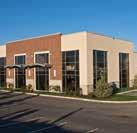

Macleod Place
II: Supported Lifestyles – 16,962 sq. ft. (expansion)
NET ABSORPTION: VACANCY RATE: 1 2
ECONOMIC OUTLOOK: Despite the headline of record-high vacancy, suburban occupiers are showing singes of improving strength. Record in-migration, public projects including infrastructure investment and the strengthening oil and gas and renewable energy industries all have positive effects on suburban demand. The year ahead will continue to see the interplay of a strengthening user market versus negative impacts from changes in space utilization.



ONCE YOU SEE US, YOU’LL SEE US EVERYWHERE.






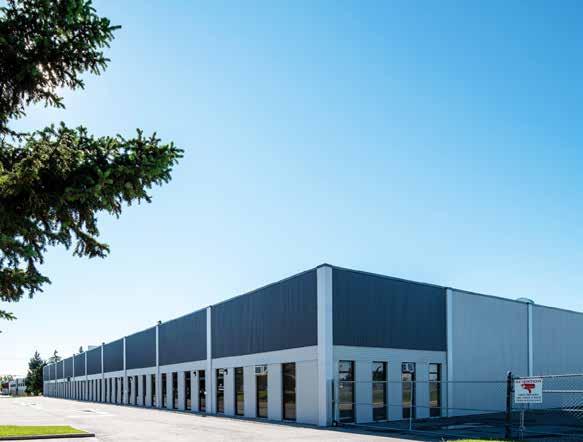




FOR OVER 30 YEARS, ESTANCIA INVESTMENTS INC. HAS OFFERED PRIME OFFICE AND RETAIL SPACE WITH A FOCUS ON LONG TERM VALUE. WE WORK WITH TENANTS TO MEET THE INDIVIDUAL NEEDS OF THEIR BUSINESS.



OUR PORTFOLIO CONSISTS OF 750,000 SQUARE FEET OF COMMERCIAL SPACE IN DOWNTOWN CALGARY

KENSINGTON.

to all positions, from front-line workers to senior management. Those areas are communication, continuous learning and community.
Clear and frequent communication with staff, tenants and owners is critical to success. It is important in managing people and helping them grow and advance in their career by establishing expectations. It is an area we can all improve on, especially during the performance review process. Strong messaging is critical during times of crisis, such as the 2013 floods or the COVID-19 response, both within companies and throughout the industry, as demonstrated by BOMA during both incidents.
 By Art Skow, retired commercial real estate executive
By Art Skow, retired commercial real estate executive

COMMERCIAL REAL ESTATE constantly evolves and will continue with new challenges and opportunities presenting themselves. None of this happens without the efforts of the people who work in the industry and organizations like BOMA that help to connect people, ideas and best practices. While buildings may be the basis of our business, it is the people who are responsible for the successes.
I have been fortunate to work in the commercial real estate sector for almost 40 years, starting as a security guard and working my way up to vice-president of property management. I held 13 different positions,
was promoted 10 times, and worked on eight distinctly different portfolios of properties with two different employers. I have overseen up to 150 people at one time and a portfolio of 15 million square feet. While most of my experience is with office and industrial, I have also been responsible for retail, residential, condominiums and parking lots. This has provided me with a broad perspective of our industry and provided the opportunity to work with hundreds of different people including owners, contractors and suppliers.
Three key areas that contribute to success in the industry revolve around the people and apply equally
Continuous learning is what keeps our industry moving forward. It is not just required of people who want to advance, but also of those who are content in their current position, as there are continually evolving expectations of owners, tenants and regulators. Sustainability seems like such a normal part of our day now, but it took well over a decade to get to that point and there continues to be opportunities to improve. Smart buildings and cybersecurity are still areas of growth for many, while COVID brought health and safety to the forefront.
How our industry interacts and supports the community will always be a strength. Volunteering, both inside of an organization and within the industry, provides significant support to the city of Calgary. With BOMA, I was able to contribute to the industry by being on the Government Affairs Committee for more than 12 years and on the board for six. Not only did it allow me to give back, it was also a learning and growing opportunity, as I was exposed to areas that were outside of my regular duties and broadened my viewpoint.
Most of all, remember that it is important to have fun along the way, enjoy your journey in commercial real estate and celebrate your successes. ■
”Three key areas that contribute to success in the industry revolve around the people and apply equally to all positions.“






ROCKY VIEW COUNTY IS A DIVERSE ECONOMIC COMMUNITY TO LIVE, WORK OR PLAY IN. ROCKYVIEW.CA


